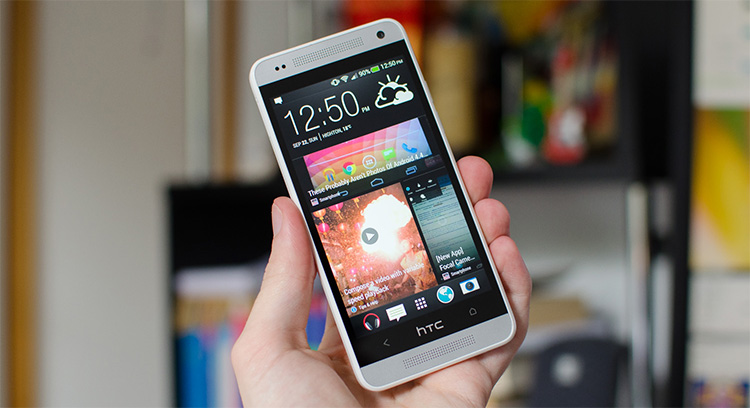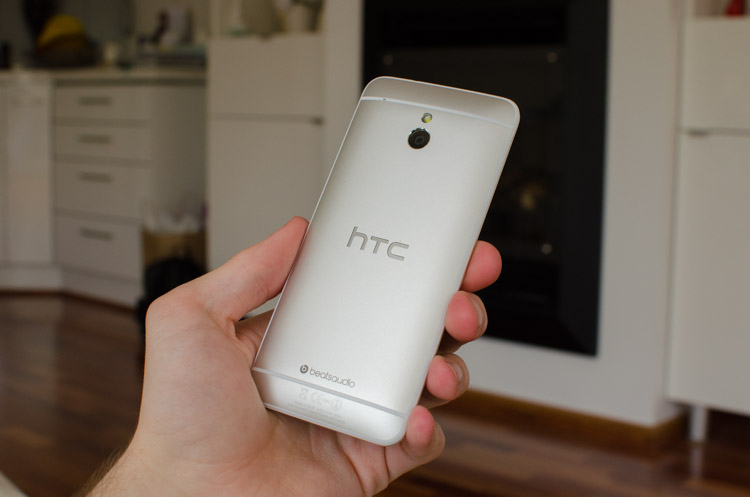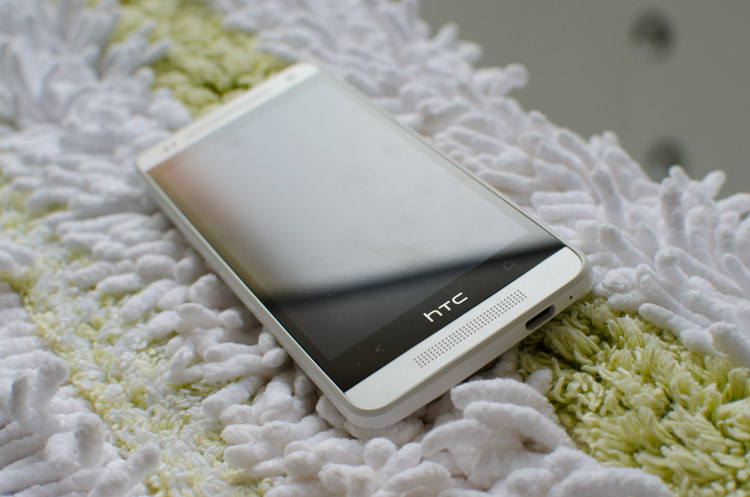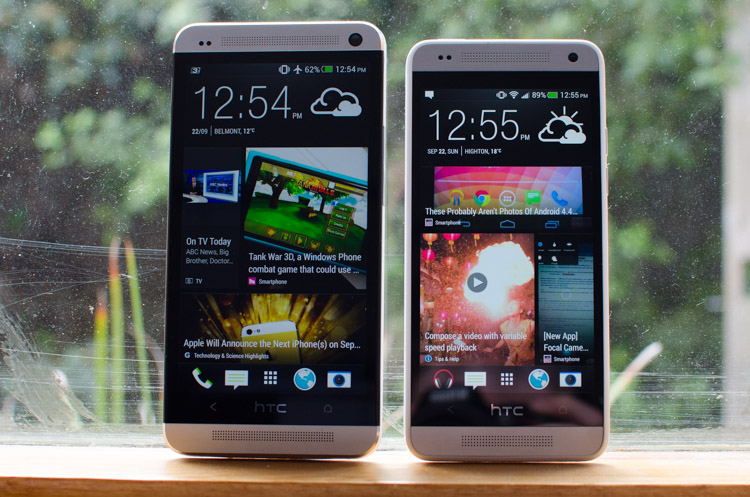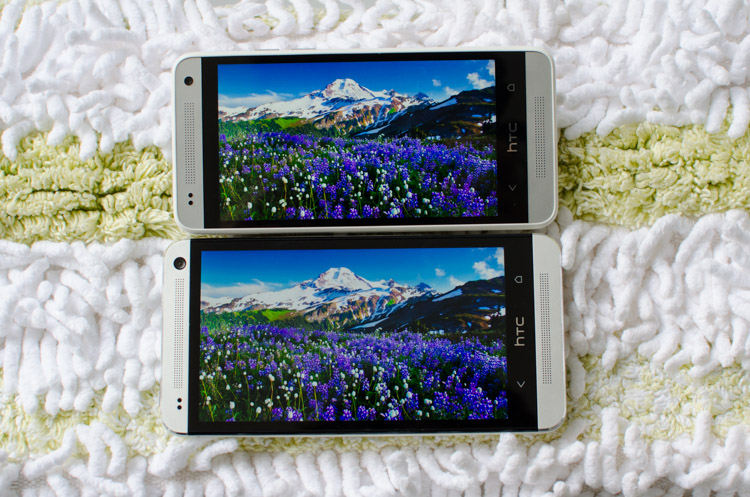On paper, the naming of the HTC One mini makes perfect sense. The mini is a mid-to-high-end aluminum-clad smartphone with a 4.3-inch display, designed for those who want a premium device without the massive size that's often associated with its bigger and faster brother, as well as other Android 'superphones'.
HTC One mini - $480 (unlocked)
- 4.3", 1280 x 720 IPS LCD display (341 ppi)
- Qualcomm Snapdragon 400 SoC
- 1.4 GHz dual-core CPU, Adreno 305 GPU
- 1 GB RAM, 16 GB internal storage
- 4 MP "UltraPixel" camera, 1/3" sensor, f/2.0 lens, 1080p video
- BoomSound, Zoe, BlinkFeed
- 1,800 mAh, 6.9 Wh battery
- LTE, Wi-Fi a/b/g/n, Bluetooth 4.0
- Android 4.2 'Jelly Bean'
- 122 grams, 9.25mm thick
Of course, there are some tradeoffs that also help bring the price down. Although the One mini includes an Ultrapixel camera, it doesn't have optical image stabilization; and despite the body mostly being formed from aluminum, some plastic has crept into the design. For the more technically minded, HTC has also dropped down the SoC from a Snapdragon 600 to a Snapdragon 400, which naturally will affect its performance.
But will HTC's tradeoffs have too much of an effect on the overall product, keeping it from being a great 4.3-inch device? Or will the price be just right for what you're getting out of the box?
The HTC One mini used in this review was kindly provided by Negri Electronics. No matter where you are in the world (including Australia, US, and abroad), Negri will provide you unlocked smartphones and tablets first and for very competitive prices.
Design
Fitting right into the One line-up, the HTC One mini is styled in a similar fashion to the HTC One. The back panel is a curved piece of zero-gap aluminum, while the front sees aluminum covering the speakers. The display is protected by the usual Gorilla Glass, with the only main difference between the One and One mini - apart from the size - being the material used around the edges.
Instead of the front and back of the handset coming together as one zero-gap unit, with plastic injected around the edges, the One mini has a less refined look. HTC has ditched the injected polycarbonate for a Samsung-like gloss edge that appears to be a barrier around the phone, rather than part of a unified design. While it doesn't look as classy as the HTC One, the white plastic surrounds match the device's other highlights, and it's still quite functional.
A change in edge material also brings a change in buttons. Again, the design feels less refined with the separated metallic volume buttons and the metallic power button on top, but the positioning is still good, especially for a device of this size. On the bottom the microUSB port is found, still upside-down for some bizarre reason, and the top sees the 3.5mm headphone jack.
At 9.25mm thick, the mini isn't the slimmest phone going around, but the natural curvature of the design hides a lot of this thickness. Generally speaking the phone feels great to hold, especially due to the aluminum and glass that makes up the majority of the build. It may be a smaller and more affordable phone, but HTC hasn't skimped on incorporating a premium design, even if they did modify the plastic used in some sections.
Perhaps the most surprising aspect of the HTC One mini is that it's actually not all that mini. It's 5mm shorter and skinnier than the HTC One, and the 4.3-inch display with a 16:9 aspect ratio, paired with BoomSound, keeps the device rather tall. The mini is considerably (9mm) taller than the iPhone 5s with its 4-inch screen, and even compared to a range of other 4.3-inch devices like the Galaxy S II, the One mini is simply a larger device.
I know a lot of people claim 4.3-inches (or smaller) is the perfect size for a smartphone, and the One mini is certainly a very nice size, but for a small footprint increase you can snag yourself a 4.7-inch (or larger) display. I might understand the necessity for people to opt for the One mini if it was closer in size to an iPhone, but it isn't. In my mind, this puts the size - and in some respects the whole point - of the One mini into question, as the phone doesn't quite live up to its name. But for some, the 5mm size reduction may be perfect.
Display
HTC has included relatively high quality displays in most of their smartphones of late, and the One mini is no exception. The handset includes a 4.3-inch Super LCD 2 display with a resolution of 1280 x 720, giving it a pixel density of 341 ppi. Super LCD displays are an IPS TFT variant used exclusively in HTC devices, although companies such as Sony and Sharp are often responsible for their production.
IPS technology allows these displays to produce a picture with better quality than you can get with a TN panel, while also delivering better contrast, viewing angles and ease of use outdoors. Super LCD displays, especially the Super LCD 2 and 3, are some of the better displays I've used: the HTC One features a Super LCD 3 display, and it's a spectacular, crisp panel to use, perhaps even the best I've seen. With the One mini's panel being smaller, less pixel dense, and using technology that's a year old, it's not quite up to the standard of the HTC One, but it's still very good for its class.
The One mini's display, packing a 720p resolution into an area of 51 sq. cm, still features a density above 300 ppi, so individual pixels will be hard to spot unless the display is a few centimeters from your face. Photos and videos look very crisp on the panel, and text is considerably sharper than HTC's last generation of devices at this size. I've been spoiled by using a range of 1080p displays recently on flagship smartphones, which are naturally a step above this display in terms of quality, but even directly up against these devices, the One mini's screen looks great.
One reason it looks so great is due to the color reproduction, which in typical Super LCD fashion, is true to life but also vibrant. HTC has tuned this panel to perfection, delivering ideal white balance and deep blacks for a strong contrast ratio. Like many other IPS LCD's, the color gamut is wide, and the viewing angles are very good, making it extremely easy to see the display from all angles without significant color distortion.
The area I continue to be impressed by Super LCD displays is in their ability to be very readable outdoors, due to a combination of filter layers and minimal gaps between the display crystals and the Gorilla Glass. When trying to use the HTC One mini at full brightness in direct sunlight, aside from the small portion of the display that is reflecting the sun, the rest of the panel is quite readable.
The display on the HTC One mini is one of the phone's best features. Even though it's smaller than a lot of the current high-end Android handsets, HTC hasn't skimped on quality, which won't leave anyone disappointed.
